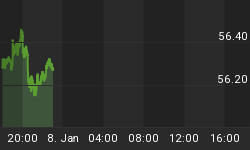

With a bounce in consumer confidence and a bump in personal spending, it looks like the consumer got a second wind. The Conference Board’s index of consumer confidence rose to 115.5 in May, up from 110 in April. But the index is still below the 116.9 reading for March. Meanwhile, the Commerce Department reported that personal spending grew 0.4% in April. This was a fine exhibition of confidence because disposable income only rose 0.3%. Higher prices whittled away much of this gain as incomes rose only 0.1% after inflation.
Higher prices also played a role in the spending component. In fact, half the 0.4% increase in spending was due to higher prices.
Lawyers have been on receiving end of consumer spending of late. Bankruptcy filings by consumers and businesses jumped 17.5% the first three months of this year. The 366,841 filings were a record for a first quarter, and the most since the second quarter of 1998. Non-businesses bankruptcies spiked 18.3% sequentially and 17.8% year-over-year. Maybe folks are racing to beat the new bankruptcy law. Or maybe the refinance boom is not what it used to be. Certainly consumers benefited from this year’s refinancing spree, but the refinancing boom did not translate into a consumption boom like it did in 1998. Just how weak would the consumer be without the refinancing windfall?
We may soon find out. The refinancing index, while still high, is near its early January level. That’s not surprising with longer-term interest rates refusing to take instructions from the Fed Chief. Despite the Fed’s work on the short end, the 10-year Treasury yield is about where it was in December. Also note that in the last refinancing boom, unemployment was on its way down from 4.5% in October ’98 to a low of 3.9% in September ’00. Today, unemployment is at 4.5% and rising. Also of note, revolving credit is 24% above the October ’98 level.
In other news, the commercial real estate market softened in the first quarter. According to Torto Wheaton, occupied office space declined by 17 million square feet. This was the first decline in the net absorption rate since Torto Wheaton started reporting in 1987. The overall office vacancy rate rose to 9.5% from 8.3% - also the largest increase in the survey's history. Last weekend Reuters reported that Cisco plans to sublease 750,000 square feet of space throughout Silicon Valley.
The NASDAQ decline has crushed the once hot venture capital market. According to a recent survey by Venture Economics and the National Venture Capital Association, venture capital firms invested $11.7 billion during the first quarter, a 56% decline from last year. That was the weakest showing since the fourth quarter 1998, when the Asian Crisis was wreaking havoc on financial markets. Venture capitalists still have an estimated $35 billion to invest. But the dwindling IPO calendar forces VC firms to scale back new investments. Also the amount of capital that VCs raise in the future could be reduced. In the boom days, VCs attracted money with huge returns. In addition, the pension fund industry was increasing its allocation to venture capital and other alternative investments. Now pension plans have reached their target allocation. That means further investments could be limited by either investment charters, or in the case of state run plans, state law. The chief investment officer for the Kansas Public Employees Retirement System, Robert Woodard said he would like to "sustain the current pace of commitments…. but we haven't got the latitude to make that decision."
The investment community has yet to realize that the current slowdown in the technology sector is not only due to excess inventory, but also to over capacity. Michael Murphy in a Bloomberg story this week depicts the typically bullish stance, "People are saying it just can't get worse than this. Intel is refusing to cut its capital-expenditure budget. People say 'look, orders are going to pick up, and you've got to be in the stocks before it happens." Investors are hoping that the new generation of cell phones, PDAs, and other digital products will spur demand. (Much of that demand from the same consumer mentioned above.) However, there is a significant chance that the consumer is starting to suffer form gadget-overload. Just two weeks ago, Palm, maker of the popular Palm Pilot, cut its revenue guidance in half for its fourth quarter ending May 30. Revenue guidance now stands at $140 million to $160 million compared to guesses of around $600 million just two months ago. The quarter will also mark the first time that Palm will report negative year-over-year revenue growth.
Since a number of technology companies have yet to significantly reduce capital expenditures, the glut of inventory will continue. Currently, the biggest foundries are running at 50% of utilization. Monday, the World Semiconductor Trade Statistics group released its latest industry forecast. Chip sales are expected to decline 13.5% to $176.8 billion for 2001. For 2002, it expects the market to recover and grow 13.9% to $201.4 billion. Even this level would be below the $204.4 billion posted in 2000.
Goldman Sachs analyst Gunnar Miller doesn't buy the second half rebound many bulls expect in semiconductor equipment. "Every channel check and leading indicator that we look to continues to deteriorate," Miller said in a research note.
















